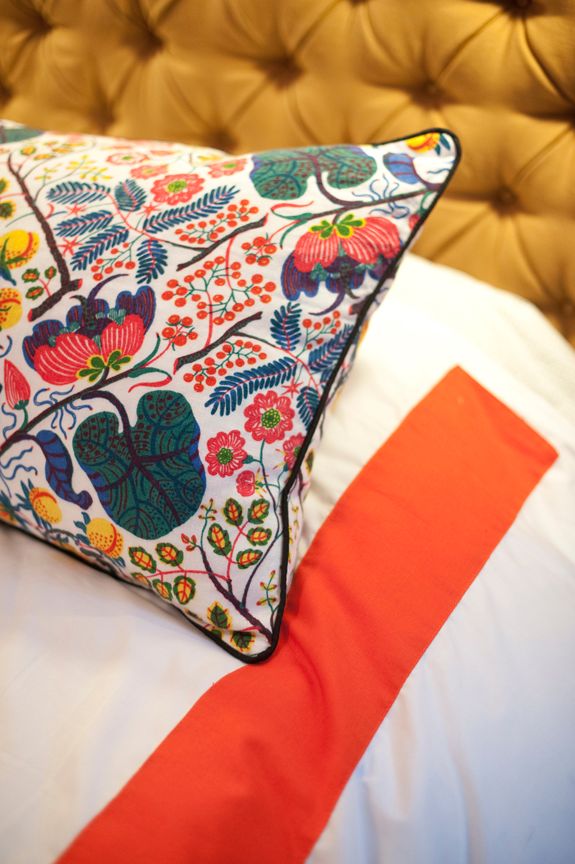I've made a couple of diamond-tufted headboards now (Joanna's was only my second though) and I feel like I have a pretty good sense of the easiest DIY approach now. For another tufted headboard tutorial I did, check out this post. I would say any upholstery job involving tufting is sort of an advanced DIY, but is this project definitely doable (maybe even fun?).
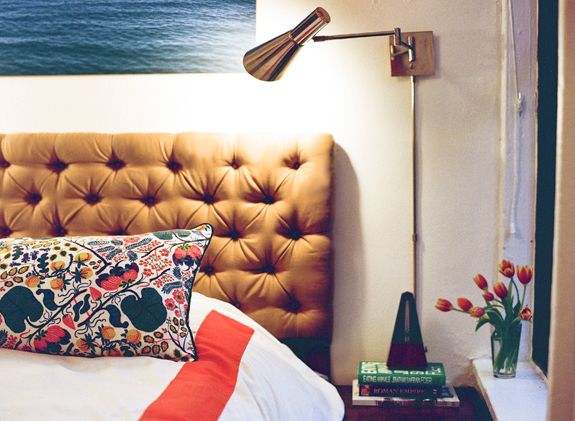
Gone are the days when I spend hours mapping out and drilling holes in plywood! I've been using pegboard and it is PERFECT for these headboard projects. Cheap, lightweight and sturdy enough. You'll be hanging the pegboard on the wall so it's okay that the board is not completely rigid.

I had Home Depot cut down the board for me, so it was just the right size for Alex and Joanna's queen bed. The holes on pegboard are 1" apart. You do have to do a little math and mapping out to figure out your button placements, but once you have the formula down, it's just a matter of counting it out and marking the holes with chalk.
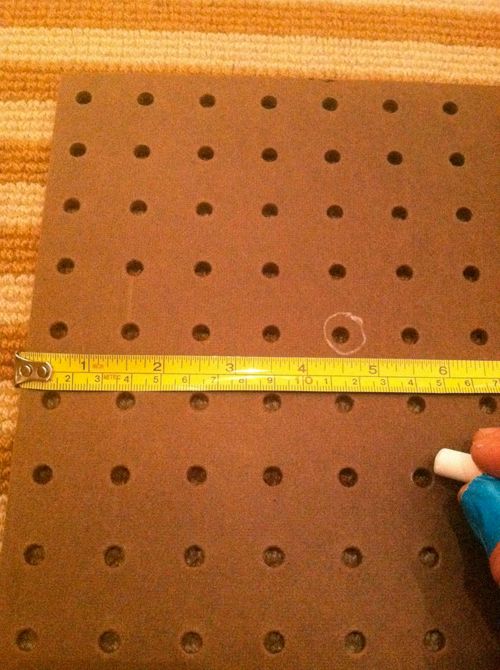
I had three rows of nine buttons and two rows of eight for a total of 45 tufts. (!) I wanted a lot of tufts though, so you could do less. I think it's a good idea to look at inspiration images first and count the buttons on that headboard and estimate the spacing you'll need for the look you're after.

I purchased my 3" upholstery foam at Joann's with a 50% off coupon. I definitely recommend using exactly 3" foam for this project. Otherwise the headboard will look thin and cheap. An important note - you only need enough foam to cover the top two-thrids or so of your pegboard. My foam was 24" tall and my pegboard was 40". The bottom part without the foam goes behind the bed.
So, to mark out your foam, lay the pegboard down perfectly on top of foam and use your registration marks and a sharpie.
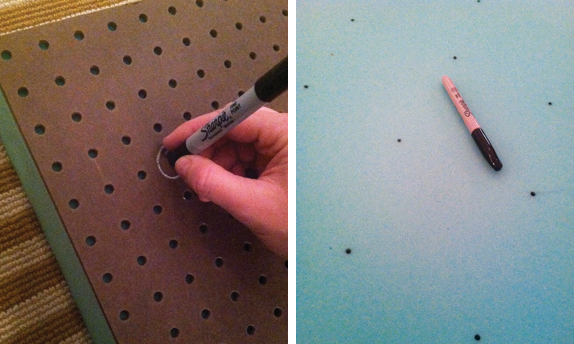
One of the secrets of getting deep tufts is removing the foam where the buttons go. My method is pretty lame - I just use a paring knife to cut a hole around the registration marks. You just grab the foam bit, twist and pull out.
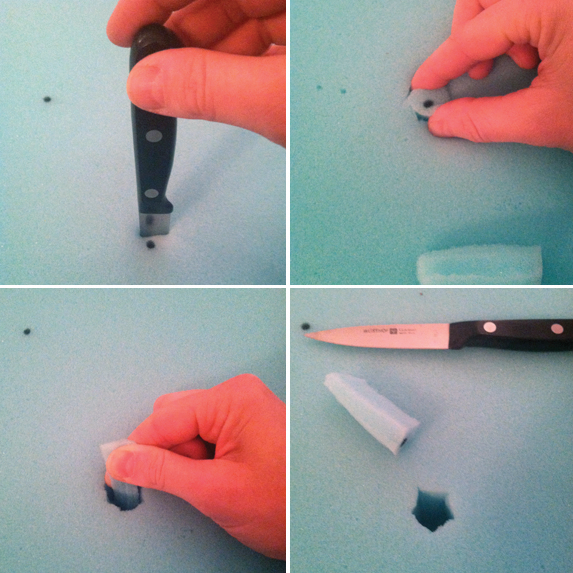
You'll fly through this step. It's a fun and easy one.
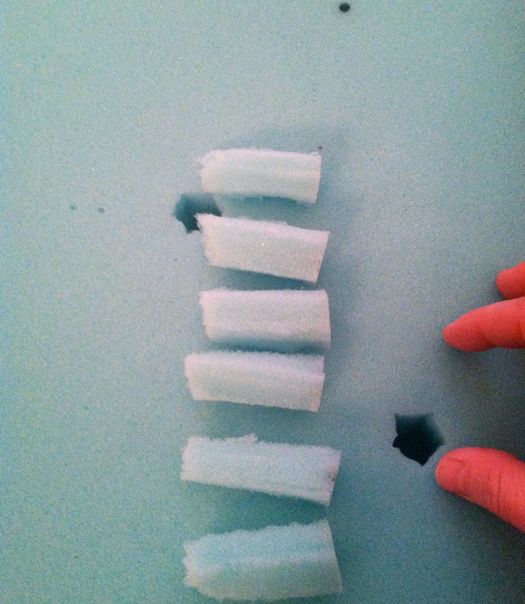
See how the foam only covers the top two-thirds or so of the pegboard?

Secure the foam to the pegboard using spray adhesive.
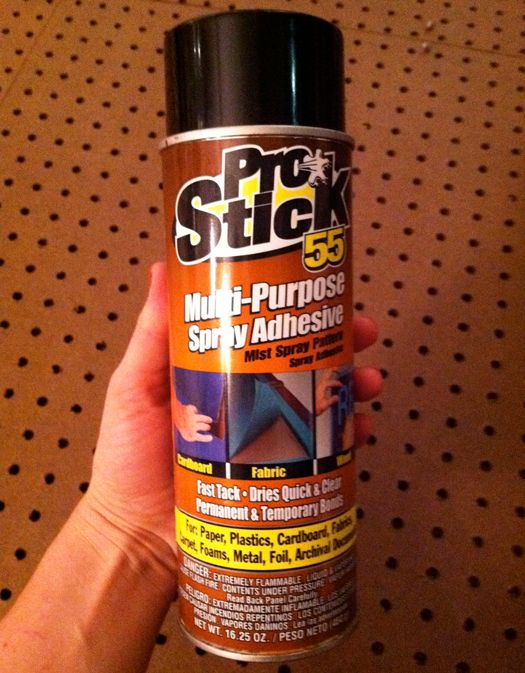
And lay down a sheet of high-loft batting on the top of your foam. The fabric goes on top of the batting.
**EDIT: A quick note about fabric. I used two yards of SOLID color fabric for this project. If you want to use a pattern (which I don't really recommend for tufting, unless the scale is super small), you'll have to piece together two or three panels of the fabric so that the piece is wide enough and so that the pattern matches up and runs the right way. Better yet, just use a solid fabric :) You can run the fabric horizontally (called railroading) and just get two yards and call it good.
PS You really will only need two yards for a queen size headboard. I was worried that the tufts would take up lots of extra fabric. Not at all. Maybe an extra couple inches total were needed for the whole headboard.
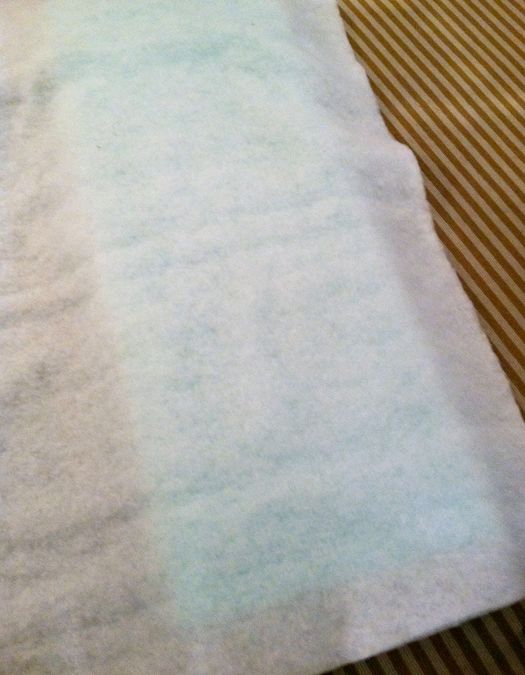
Here's the part where you'll need lots of buttons. You can buy button making kits and refills for just a few dollars (I used the 5/8" size). It does take some time to make all the buttons though, so this would be a good place to enlist the help of a friend and get it done assembly style.
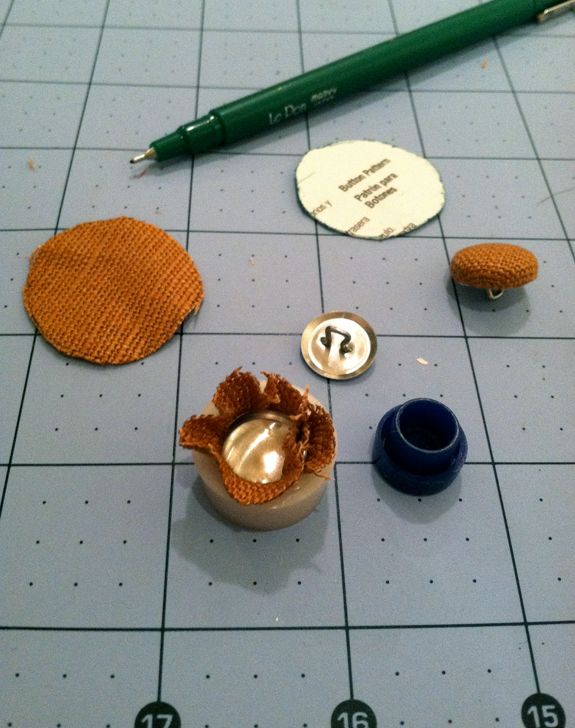
Using a long upholstery needle and doubled up upholstery grade thread (NOT the all-purpose stuff! This thread is more like twine), triple knot your button, and find your first button hole.

From the front of the headboard, push the needle through the fabric, batting, foam hole and pegboard hole, all the way out the back.
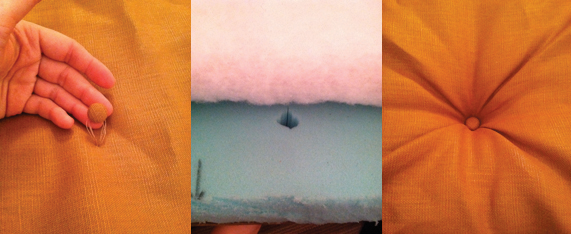
Pulling out and down as tight as you can, put a staple into the pegboard over the thread. But still keep pulling that thread to keep the tension. Put in a bunch of staples with the thread being pulled in different directions to secure that button in as deep as it can sit.
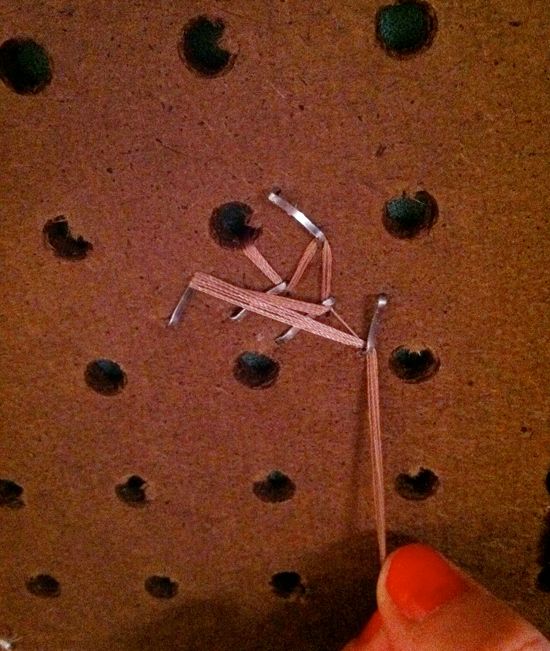
And your first tuft is done! You always want to start in the center and work your way out horizontally.

Be sure to leave the edges for last. I found it was taking me about an hour per row in the beginning. By the end I had it down to 20 minutes a row. Honestly though, my fingers were absolutely throbbing at this point! I busted this headboard out in a night and it would have been better to split up the tufting part into two nights, just to give my fingers a rest :)
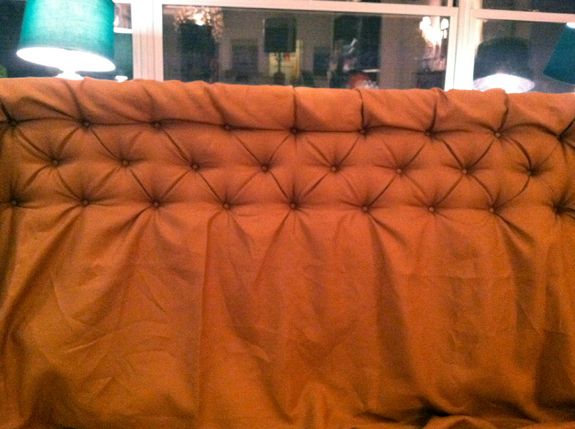
Like any upholstery project, there is something to be said for keeping a soft hand and sort of artfully playing with the fabric. Especially when deciding where to place the button in the fabric and in getting the fabric to fold right. Play with the fabric and it will work with you. It's absolutely begging to sit in a diamond shape if you help it along a little. :)
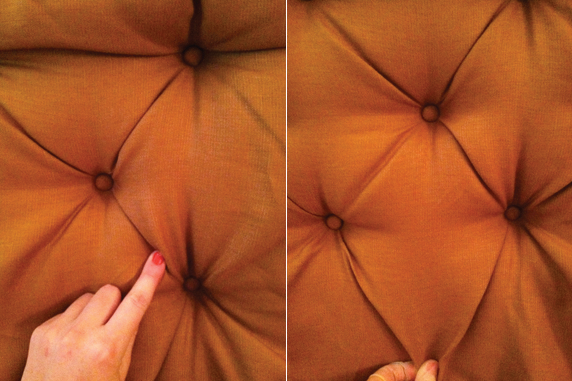
Once all the tufting is done, you'll just need to finish off the edges. Don't just roll the fabric back behind the pegboard and staple it down. The key to nice looking upholstery projects is all in the lines. Minimize the bumps and wrinkles! The fabric, especially along the edges should be flat and smooth. To make the edges of a headboard smooth, fold in a line going straight out from each tuft toward the perimeter. The fold takes care of all the excess fabric so that the edges can be smooth and taut and ready for you to staple down on the back side.
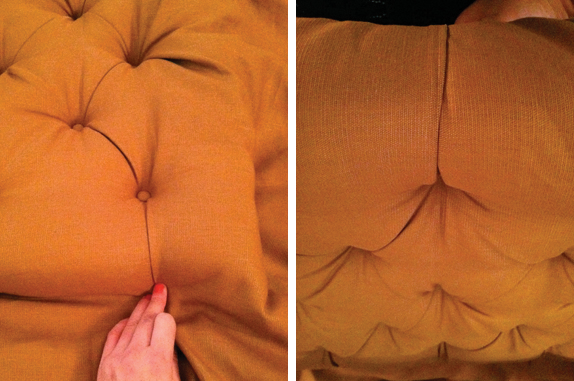
To finish the bottom of the headboard, where the foam ends, just push your staple gun up under the foam a little and run a row of staples along the whole front bottom. Then pull the fabric down over the bottom edge of the exposed pegboard, neatly fold behind and staple back, like you did with the other three edges of the headboard. And that's it!
We screwed three D-rings into the back and used a couple Wall Dog screws in the wall to mount the headboard.
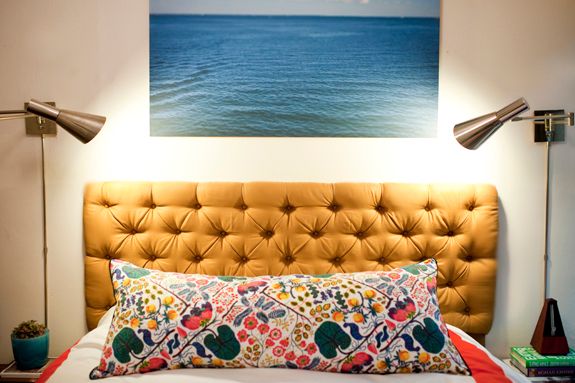
You can see in this shot how the foam only starts above the mattress. This way the mattress sort of sits into the headboard.
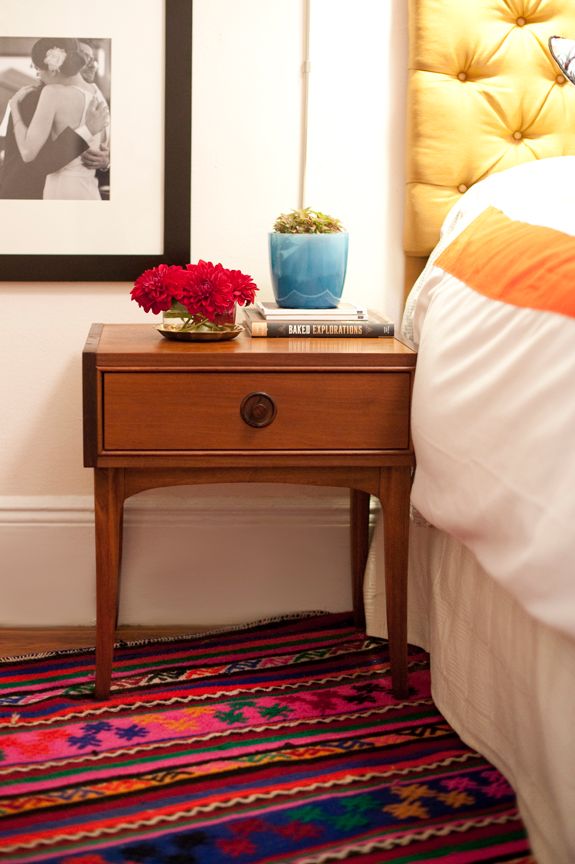
PS The camel linen is from Gray Line linen, from their Warsa line (only $9 a yard and it comes in all the colors under the rainbow).
